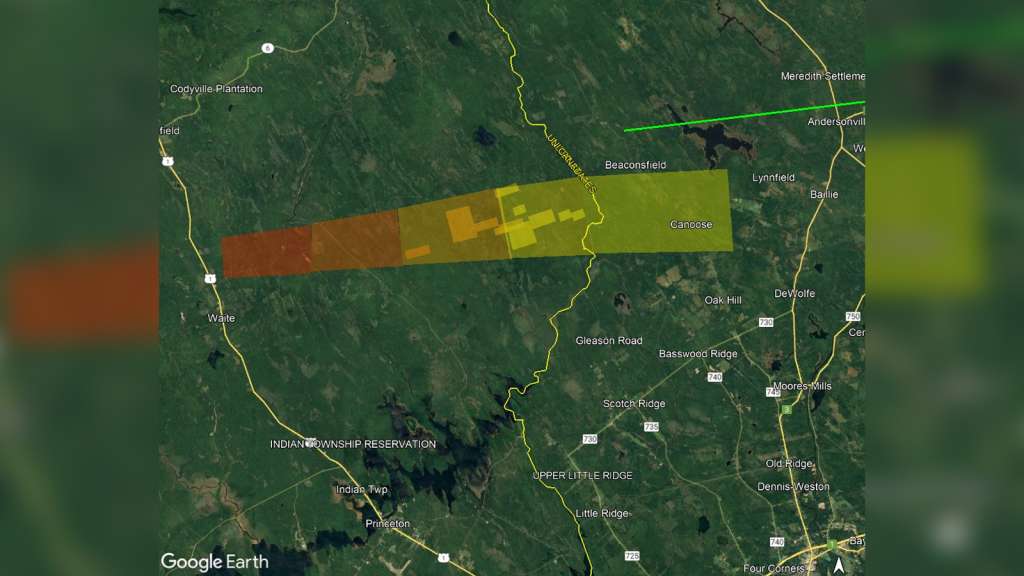(CNN) — Meteorite hunters, get ready to head into the woods.
A museum in Maine is offering $25,000 for the remains of a space rock that streaked across the sky last week before landing near the border between the United States and Canada.
The fireball, which was visible in broad daylight and created a sonic boom, was detected by radar, allowing NASA’s Astromaterials Research and Exploration Science (ARES) Lab to calculate the “strewn field” — where fragments of the meteor might be found — near Calais, Maine.
Darryl Pitt, head of the meteorite division at the Maine Mineral & Gem Museum, said he was keen to study any fragments of the meteorite, which could contain valuable information about the solar system. The $25,000 reward is for the first meteorite piece found that weighs 2.2 pounds (1 kilogram) or more. However, he said the museum would be willing to pay for any specimen “irrespective of its size.”
“Finding meteorites in woods of Maine. It’s not the simplest of the environments,” Pitt said.
“It’s a sparsely populated area but not as sparsely populated as where most meteorites fall — the ocean,” he added.
Worldwide, only eight to 10 meteorites are recovered each year out of hundreds seen falling to Earth, Pitt said.
A meteorite that fell on a driveway in the United Kingdom in 2021 turned out to be an extremely rare type of space rock and is now part of the Natural History Museum in London.
A ‘significant event’
The Maine meteorite was visible for more than four minutes from around 11.57 a.m. ET on Saturday, April 8, according to NASA. Winds might have carried smaller meteorites across the border into Canada, the agency noted.
“For the light (of the fireball) to overwhelm the brightness of the day, it was a significant event,” Pitt said.
Pitt said a meteorite would look different from the surrounding rocks. The outside would likely be blackened — after being toasted by the heat as it plummeted through Earth’s atmosphere — while the inside would likely be a different color. It may also contain iron and therefore be attracted to a magnet.
The museum offered a reward for a meteorite once before. However, the search for fragments of a meteor that lit up the sky in the region in 2016 wasn’t fruitful, Pitt said.
This time, Pitt said he was “guardedly optimistic” because there is more detailed information available from radar data, and he expects a “robust response” from meteorite hunters.
(Copyright (c) 2024 CNN. All Rights Reserved. This material may not be published, broadcast, rewritten, or redistributed.)

